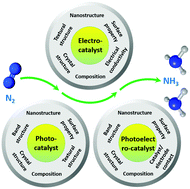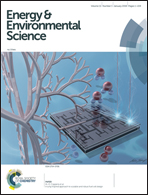Rational design of electrocatalysts and photo(electro)catalysts for nitrogen reduction to ammonia (NH3) under ambient conditions
Abstract
As one of the most important chemicals and carbon-free energy carriers, ammonia (NH3) has a worldwide annual production of ∼150 million tons, and is mainly produced by the traditional high-temperature and high-pressure Haber–Bosch process which consumes massive amounts of energy. Very recently, electrocatalytic and photo(electro)catalytic reduction of N2 to NH3, which can be performed at ambient conditions using renewable energy, have received tremendous attention. The overall performance of these electrocatalytic and photo(electro)catalytic systems is largely dictated by their core components, catalysts. This perspective for the first time highlights the rational design of electrocatalysts and photo(electro)catalysts for N2 reduction to NH3 under ambient conditions. Fundamental theory of catalytic reaction pathways for the N2 reduction reaction and the corresponding material design principles are introduced first. Then, recently developed electrocatalysts and photo(electro)catalysts are summarized, with a special emphasis on the relationship between their physicochemical properties and NH3 production performance. Finally, the opportunities in this emerging research field, in particular, the strategy of combining experimental and theoretical techniques to design efficient and stable catalysts for NH3 production, are outlined.



 Please wait while we load your content...
Please wait while we load your content...